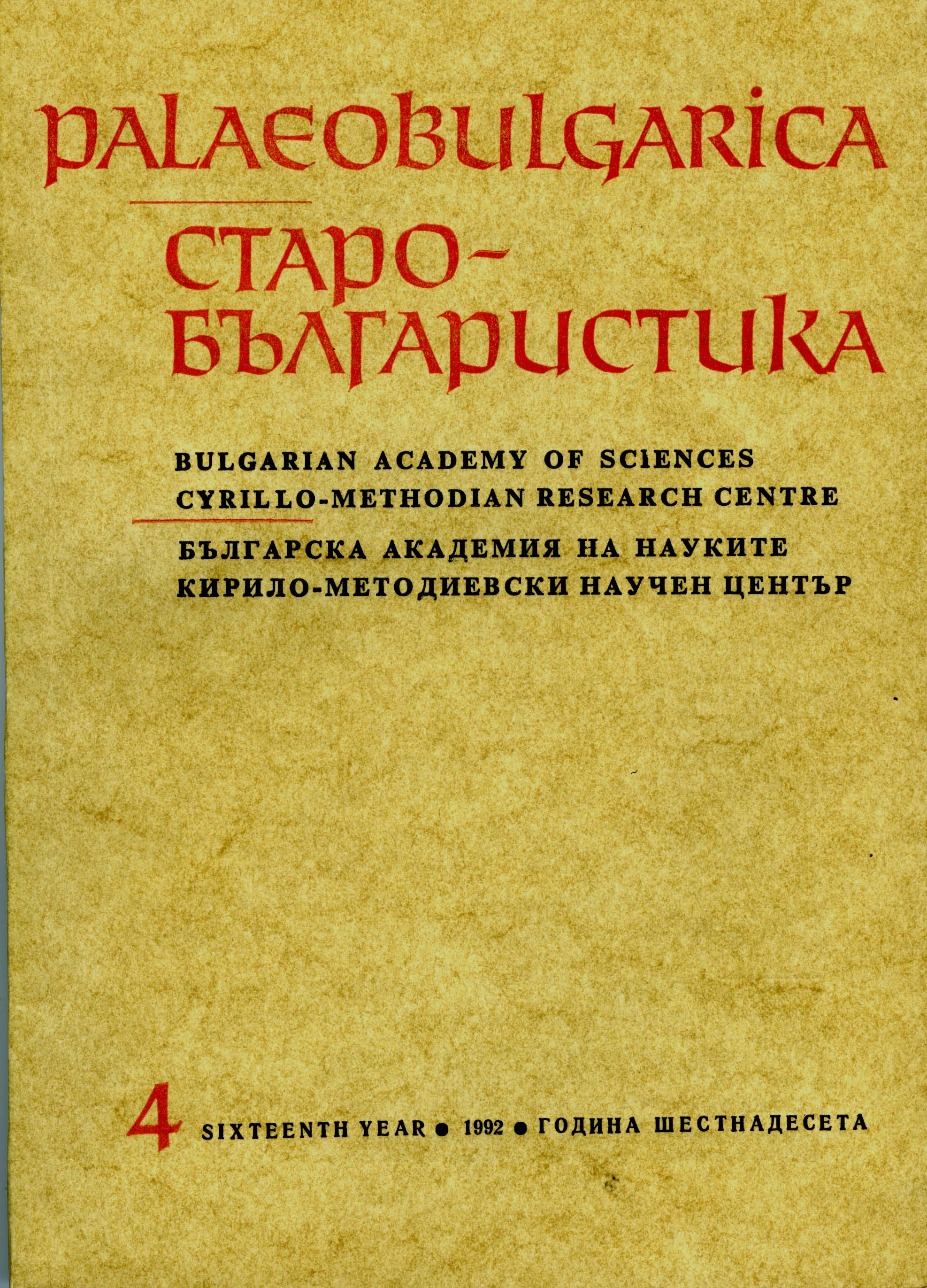
We kindly inform you that, as long as the subject affiliation of our 300.000+ articles is in progress, you might get unsufficient or no results on your third level or second level search. In this case, please broaden your search criteria.

The paper discusses Varro’s texts about agriculture included in the Byzantine encyclopedia on agriculture by the redactor. The paper gives a historical overview of the use of Varro’s texts from the end of the first century BC to the middle of the tenth century. The texts refer to the following topics: when and in what month should certain agricultural crops be grown, how can the land be cultivated, instructions for the production of grapes, wine, olives and artichokes, feathered fowls and cattle breeding and other animals. Based on centuries of using Varro’s texts on agriculture, there is an impression that these texts had great importance for the development of agricultural production not only in Rome but also the Byzantine Empire.
More...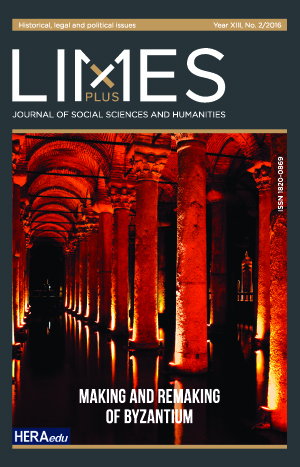
The seventh century is widely regarded as a time of epoch-making changes in the Eastern Roman Empire and some students of the period are inclined to speak of it as a time of “crisis”. But what does “crisis” entail and can this concept help to explain the social dynamics? Social theory regards the establishment of a “threat discourse” as the first step towards successful crisis management and stresses the fact that coping is only possible after such a threat discourse has become predominant. This paper considers the evidence for the development of a threat discourse in the reign of Herakleios. During the first decades of the seventh century the Roman Empire faced major threats from the outside and the inside: the attacks of the Avars and the Slavs, the war with the Sasanian Persians together with a shortage of grain supply and money, military defeat, and internal strife led to frustration among the population. Those tensions are mirrored in contemporary literary sources: the poems of Georgios Pisides; the homily on the siege of Constantinople in 626 commonly attributed to Theodoros Synkellos; the work of the historian Theophylaktos Simokates. The aim of this paper is to describe how contemporaries perceived the current threat. It is argued that specific aspects of the threat discourse created a sense of community among the population and a bond of trust between the people and the emperor. This association was finally able to concentrate all available forces to handle the crisis and save the Roman Empire.
More...
This paper deals with political theory that Michael Psellos expresses in his programmatic work, the Chronographia, exploring it on its own merits and separating it from his alleged social and political “biases”. Psellos’ history is analyzed from several perspectives and on several narrative layers. The paper dwells on his views on the imperial ideal, as well as his opinions on participants in the political life of the empire (mainly imperial advisors and generals), from both horizontal (Constantinopleprovinces; center-periphery) and vertical (the masses and the aristocracy) perspective, reflecting upon his stance on what constitutes aristocracy. Finally, it reexamines Psellos’ “Constantinopolitan bias” by distinguishing his attitudes from his perspective, identities and alliances, and exploring in which ways exactly his metropolitan upbringing and education shaped his narrative.
More...
The reign of Emperor John II Komnenos (1118–1143) has traditionally been overlooked by scholars due to an apparent lack of source material, particularly in comparison to his father and son, Alexios I and Manuel I. As such, developments from this period tend to be examined in broader bilateral studies examining Byzantine dealings with peoples such as Serbs, Hungarians, Turks and Venetians separately, or only in reference to one region, or another figure, and the same goes for Crusader and Islamic polities later in the reign. This is despite the fact that John’s reign, occurring between the First and Second Crusades, occurred at a crucial time in Eurasian history, when Western Europe and the Middle East entered a new phase of contact on account of the Crusades. Byzantium was still, arguably, the most powerful Christian nation, and examining how the formerly unquestioned hegemonic power dealt with the rising powers of the Normans, Turks, Italian maritime republics and others deserved study if these developments are to be understood at all. As such, this paper aims to expose the changes in our analysis that result from the incorporation of non-traditional source material, highlighting how John’s reign as a whole should be re-examined with this methodology. Using the years 1123–1126 as a case study, the dividends such a methodology can pay will also be shown through analysis of Byzantine foreign policy in this period, as a previously overlooked crisis occurred for John’s regime in 1126.
More...
The paper analyzes the 9th century liturgy of the hours on the basis of the Liber officialis by Amalarius of Metz. The main issue is focused on reconstruction of order and prayers that may be found there. In each hour described by the author of the Liber officialis it is possible to find identical elements: explanation of prayer time, listing psalms, verses or other prayers, aim of each prayer and behavior of priest and congregation. Amalarius gave to all mentioned elements the allegorical interpretation.
More...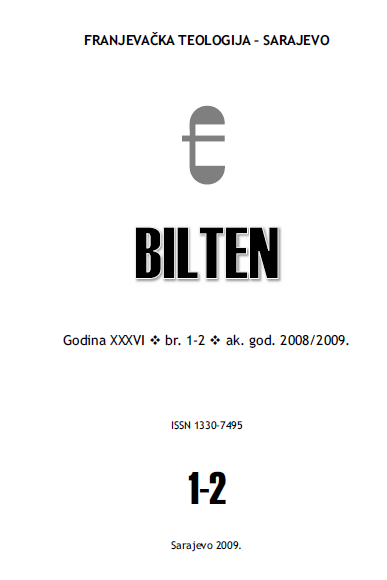
Bilo je to slavlje kakvo “novi Rim” još nije doživio: veličanstvena trijumfalna povorka valjala se ulicama grada, pobjednički vojnici vukli su za sobom podčinjene barbare, u sredini purpurno odjevenog vandalskog kralja Gelimera. Postrojbe su, pred očima naroda, nosile veličanstvena blaga, draguljima ukrašene dragocjenosti, zlatne tronove, srebreno stolno posuđe, čak i pribor iz jeruzalemskog hramskog blaga, koje su Vandali nekoć prigodom svog pljačkanja Rima ugrabili. Svjetina je oduševljeno slavila svoga novog junaka, vojskovođu Belizara, koji je ponosno prolazio prema hipodromu gdje ga je očekivao car Justinijan.
More...
Carigrad 559. godine: u trijumfalnoj povorci car Justinijan jaše kroz grad. Kod crkve Svetih apostola događa se nešto nečuveno: car silazi konja, ulazi u Božju kuću, moli se i pali svijeću na grobu svoje žene Teodore. Za Teodoru, veliku ljubav svog života, riskirao je svoje prijestolje. U njoj je imao važnu savjetnicu i bila je jaka žena na njegovoj strani.
More...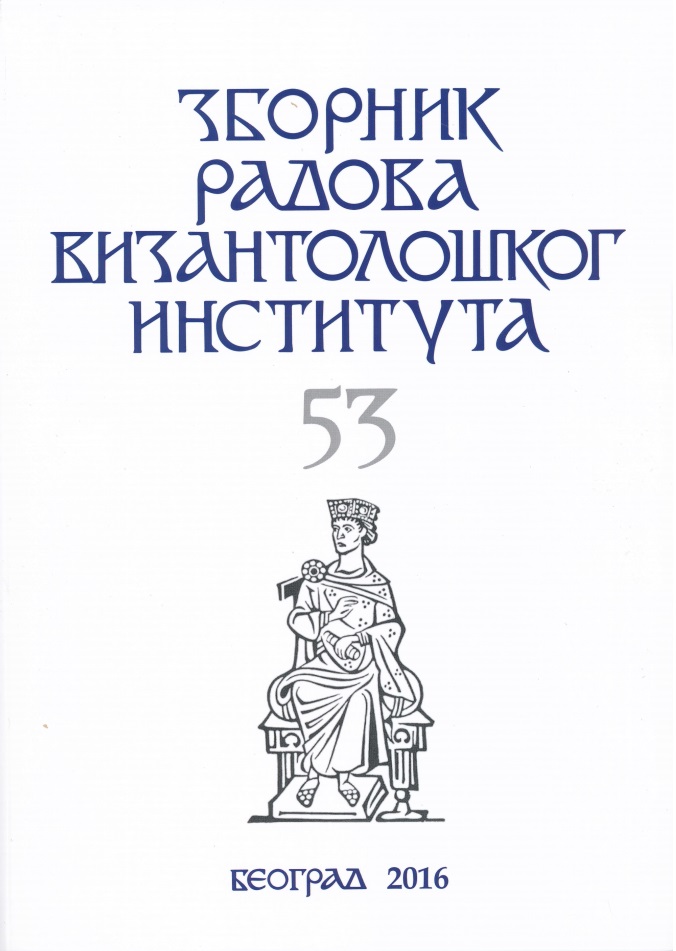
The paper analyses the circumstances in which the incumbents of the office of the logothetes tou dromou operated in the first century of this post’s existence. It concludes that in the 8th century the logothetes tou dromou was usually recruited from military ranks and that he could also wield military authority. At this time the system of central command was not yet defined through specific functions, which certainly influenced the competences of leading Byzantine officials such as the logothetes tou dromou.
More...
This article attempts to ascertain the nature of the financial institutions fashioned diachronically to ensure the orderly operation of the Byzantine economy, encompassing the currency in circulation, credit availability, and the nexus of financial services; to analyze their role and evolution over time; to examine their ability to make rational use of the available financial resources; and ultimately to assess their contribution in ensuring the effective functioning of the marketplace and the economy in the 10th–12th centuries. Emphasis is placed on the effectiveness of the monetary system in providing the requisite liquidity to meet the needs of the productive sectors of the economy; the determining factors of money supply and its sectorial penetration; the measures taken to prevent hoarding and alleviate the gold-dependence of the fiscus; the functional distinction between money-changing and moneylending and its rationale; the rules established for the orderly conduct of currency transactions to prevent unsavory practices; the participants involved in lending operations and the extent of market competition; the importance of credit (and hence debt) financing in promoting agriculture, manufacturing, and trade; and the role of the state in safeguarding the soundness of the monetary system, banking services, deals in precious metals and valuables, and in the pricing of capital. Moreover, the paper addresses collateral issues in dispute providing more cogent answers, identifies misinterpreted sources and unsupported assertions, and fills in lacunae. It is hoped that the searching examination of the design and operation of the enacted financial institutional arrangements will provide valuable insights as to their genesis, adaptation over time, and likely performance in light of the Byzantine economic, social and political realities.
More...
Using a series of historical and archaeological data, as well as an extensive bibliography, the author begins his study devoted to the investigation of the problem of Romanian agriculture during the 9th-14th centuries
More...
The paper deals with the perambulations of land estates and disputes over the boundaries of the village communities and noble estates in the Kingdom of Poland during the 15th and 16th centuries. It investigates the perambulations of estate boundaries as a complex process of conceiving of and transforming the physical space through the procedures and norms of law, and to highlight the role they played in forging and reshaping the local tradition.In spatial terms the project will focus on Galicia, known also as Red Ruthenia or Halych Rus'. This historical region constitutes the territory of the present-day south-eastern Poland and western Ukraine. Since the forties of the fourteen century Galicia was under the control of the kings of the Piast, Anjou and Jagiellonian dynasties.This study starts with an outline of the legislation regulating the boundary law in the Kingdom of Poland in the 14th–16th centuries. It also introduces readers to the emergence and spread of the concept of linear boundaries of estates and villages in late medieval Halych Rus’ as well as to interrelations between the practice of perambulation and the consolidation of the nobility’s rights of lordship in that period. It further provides a short overview of the local officials endowed with the power to conduct perambulations. The main focus of the analysis is on the interplay of literacy and oral communication in the perambulations, and its influence on the process of constituting and reshaping local traditions. It has sought to demonstrate how various forms of the local knowledge, which were transmitted through oral communication, were not only exploited, but also adjusted and reshaped due to the complex influence of the institutions and practices of law, lordship and royal governance, based on the new kind of pragmatic and administrative literacy which became widespread in the Kingdom of Poland during the 15th and 16th centuries. The paper further explores how the attempts at accommodating and reshaping the local tradition by means of institutional practices like perambulations were marked by their own inconsistencies and ambivalence. Finally, it highlights how “the game of tradition”, as Gadi Algazi puts it, in which the perambulations were implicated through the procedures of adjudicating, erecting markers, and record-making, was inextricably interwoven with and affected by the public enactment of the written record as well as by the complex process of dispute settlement.
More...
This paper deals with an anonymous editor as the real author of the Byzantine agricultural encyclopedia Geoponika. The first part of the paper provides a historical view of the origin and structure of Geoponika. Some of the authors whose works preceded Geoponika are given. Editor included some of their texts in the encyclopedia. The second part deals with the problem of determining the authorship of some of the works included in Geoponika. Many of these writers and their works are unknown to us today. Thanks to the editor’s work on Geoponika their texts are at least partially preserved. Finally, in the third part, the author pays attention to the text of the anonymous editor, which was included in the Geoponika and represents his contribution to the final designing of Geoponika. Through these texts, editor wanted to familiarize the readers with his personal experiences in agriculture. There are texts, comments, opinions, and conclusions throughout the entire encyclopedia. In this way, the editor wanted to present his suggestions for improving the agricultural production to those who are interested.
More...
One of the oldest benefits collected during the reign of the Piast dynasty was the duty. This benefit, had no doubt the nature of the tribute paid to the general public in exchange for crossing the customs house, the city or the state border, levied on goods transported. Were burdened with him both professionally traders trade and ordinary residents in special for this purpose established collection points – customs chambers, on the basis of existing tariffs.
More...
This study examines a new, assumed thesis that Aachen in the 9th century ‒ at least for a few years ‒ became new Rome and new Constantinople. So, Aachen became a new center in Europe in the most important aspects ‒ culture, art and theology. As the center of Carolingian culture and theology, the town became the center of the part of Europe ruled by Emperor Charles the Great. This study also discusses that new Frankish culture, Frankish art and Frankish theology were created in Aachen, and because of that it became new Rome and new Constantinople.
More...
The dinasty, which ruled Serbia during the first half of the XIIth century, emerged around 1082/1083 when Bodin, king of Dioclea, conquered Serbia and sent two zoupans from his court, Vukan and Marco, to establish a new dinasty. The region which came under the rule of Marco was situated, most probably, in the areas of modern northern Serbia as well as Bosnia, south of the Sava river. Therefore, his northern neighbours were Hungarians. It is quite indicative that personal name Uroš comes from the Hungarian root ur - meaning princeps or dominus, and allows conclusion that Marco was married with the unknown Hungarian women, probably of noble stock. It is also assumed that the sons of Marco were Uroš and Stephen Vukan, the same persons mentioned at Byzantine princess Anne Comnene in 1094 as the nethews of grand zoupan Vukan. It is also assumed that comes Marco, signed on two charters of Hungarian king Coloman 1111 and 1124 is the same person who was the father of Stephen Vukan and Uroš, and whose name is missing on the another charter of king Coloman dated in 1113 among the comes's who are usually subscribed on royal charters. According to this identification of comes Marco and zoupan Marco, father of Stephen Vukan and Uroš, it is concluded that Uroš overthroned legitimate heir of grand zoupan Vukan, Zavida, with the help pf his father and his Hungarian ally
More...
Literature has thus far denied that the Sclavinias, established in the 7th century, were states. Various terms have been used to denominate them (e.g. formations), but they have not been precisely defined. Considering that a state consists of three elements: government, territory and population, this paper shows that the Sclavinias had their rulers as early as late 4th century, and we know them by their names in the second half of the 6th century (Daurentius, Musokios, Ardagast and Peiragastos). Musokios is called a rex, which a title of sovereignty. There may even have been a dynasty (Idarisios and his sons, Mezamiros and Kelagastes). There is a record of a term ‘Ardagast’s land’, which points to a fact that the lands which Ardagast ruled over were quite definite. The rulers exercised their authority over a certain population which is evident from the term ‘subjects’ used to denote the population subjected to Musokios. There is even an assump¬tion that there was the fourth element of state, a name, which constitutes a part of the state subjects’ identity. Based upon an analysis, it has been concluded that the states were named after their rulers and not after the lands or ethnic characteristics. Therefore, a conclusion can be drawn that the Sclavinias were states.
More...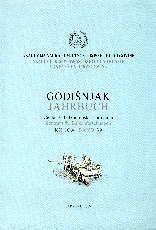
Until now it was considered that the earliest mention of Bosnia belonged to the period from the middle of the 10th century when the Byzantine Emperor Constantine VII Porphyrogenitus (945-959) in his famous work De administrando imperio, listing the kastra oikoumena in Serbia, also mentioned two towns in the region of Bosnia: Katera and Desnik. On the other hand, whilst listing Slav principalities in the former Roman province of Dalmatia, the educated Emperor registered: Croatia, Serbia, Zachlumi, Terbounia, Pagania and Dioclea, but not Bosnia. It was according to these writings that an overwhelming opinion about Bosnia being an integral part of Serbia at that time was formed in historiography. This view was further corroborated by the information provided by Einhard in his Annals from the year 822, when he said that Serbs were a people who ruled over a large portion of Dalmatia. Together with the already known borders of Southern Slav principalities, as recorded by Emperor Constantine VII, it was evident that Bosnia did not exist as a principality in the 9th century. The other important source for early Bosnian history is the Gesta regum Sclavorum, a work considered for too long as a creation from the middle of the 12th century. Since this work belongs to the very end of the 13th century (1296-1300), it can be said that news about Bosnia from that scripture, which concern the time before 1018, can almost completely be disregarded as untrustworthy. It is also well known that the number of Slav principalities in the area of the modern Western Balkans was much bigger in the earlier period than in the time of Constantine Porphyrogenitus.
More...
The article discusses the sacred essence of the Ukrainian house as a special hospitality’s topos with its typical constructive elements indicated with festive symbols in which the meeting of the guest is perceived as a festive event, and the place of the meeting – as a symbolic field of the perceiving of the stranger. The Ukrainian hut was identified not only with the concept of the human security, but gradually became a symbol of the hospitality. The meeting of the guest promotes the creation of the so-called mythological festive space with the special relationships that is explained with the initial provision of visitor the sacred symbolic status. The place where it becomes possible to meet the guest, and his dwelling place for it prohibited, itself topological structure of "greetings" – all this – is not only the space for the owner and his guests, but also a manifestation of the sacred. The waiting for the guests suggests an attempt to bring the topology of everyday life to an ideal image: to bring his original purity, symmetry and harmony. This place of the meeting a guest has always been a hut, a house – one of the main symbols of the hospitality. In the mythology of the Ukrainians the important place was given the hut. It was seen as a man-made world that responds to his ideas. Farmhouse, embodying the living space and ideological space of the Ukrainian, united the earthly, underground and heavenly beginnings, representing the three spheres of the existence: the heavenly (spiritual), earthly (the real) and underground (surreal) worlds. The house recreated the picture of the world, where the four walls of the house are turned into four cardinal points, and three-dimensional symbols of the foundation, blockhouse and roof meets the three levels of the universe: the underworld, the earth, the sky, associated with the divine powers. The ideas of the divinity of the top contributed to the sacralization of the earthly of the family as soon. In particular, the status of a respected and honorable man stressed the country or the spatial increase. The place the head of the Praukrainian family was the most profitable – by the fire, which was located on the opposite side of the entrance. He was sitting, as usual, on the increase, which is supposed for the privileged deity. That was such an unusual situation, since it is known that almost to the Xth century the family had ate on the field, putting the food on a small slate. The space of the house is filled with things that symbolize the values of kinship and everything connected with them. The most important among them are the oven and oven corner. The oven is predominantly female symbol that symbolizes a woman in general with her family responsibilities. Only from the moment of ignition in the oven of the fire the house was considered as a residential. It has long been known the cult of the stove as a major talisman inside the house in the Ukraine. The Ukrainians considered the stove post as a sacred place in the home. It is sometimes identified with the Brownie, so the Brownie had still another name – "the post". According to the beliefs of the Ukrainians, it was behind the stove the housing of the Brownie – of the good spirit of the family, which is always with the people settled in a new house built. He is the master of the house, the god of the home fire, it protects not only the house, but also all its household, so the Ukrainian myths attributed to him the great influence in the growth of the welfare of the family. The stove warms the house, it was baked bread and a daily cooked meals for the family and treat the guests. The meeting of the guests is not just to spend the time and money, but also to take part in the ritual, which takes place in a symbolic space and time. The meeting guests connected, first of all, with a festive preparation of the room. One of the sacred center of the human existence is its housing that is pre-purified, made festive. Thus, the space of the hospitality as a meeting place of the welcoming guests is symbolically sacred place to receive guests in a special context, in the context of the holiday, which gathers the people together, not only as an object, but as a symbol of the spirit of the involvement, and a symbolic first step towards the recognition of their guest is the permission to go to the house. A traditional ritual of the hospitality is associated with the ordering of the guest, the symbolic involving to the temporary twinning with the owners of the house, and even with the all native. Already the owner's permission to enter the house is perceived as the first symbolic step towards the recognition of their guest as not stranger. However, in the space of the hospitality the complete transformation of the guest to own takes place only temporarily. The mentioned "twinning" is limited in the time and space with a definite "fall-out" in which both guests and hosts.
More...